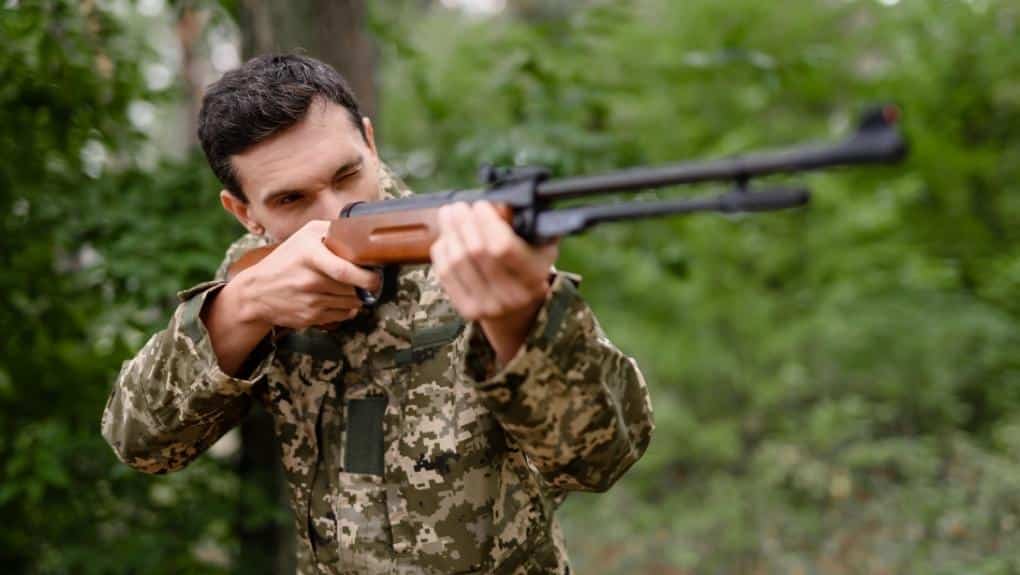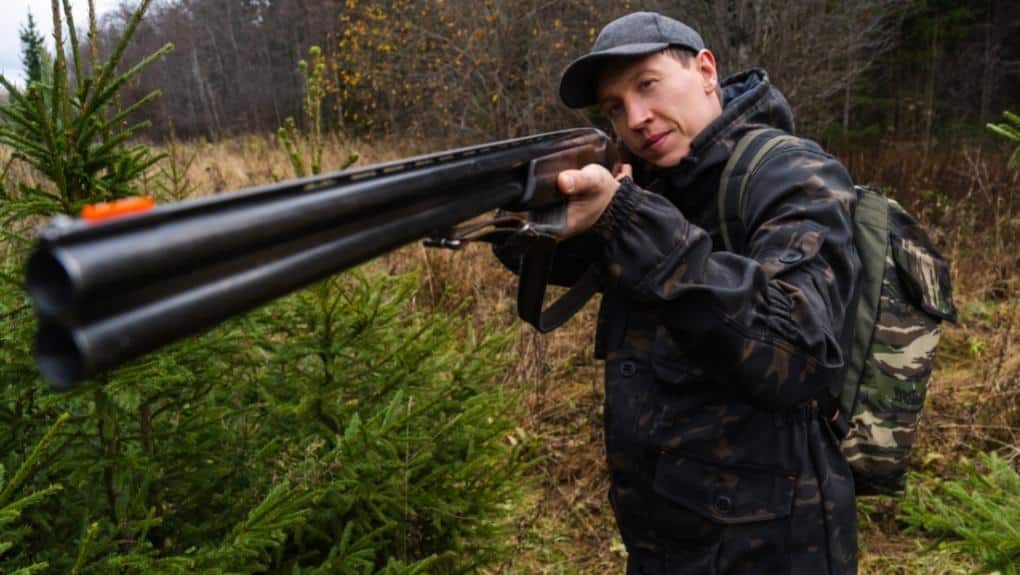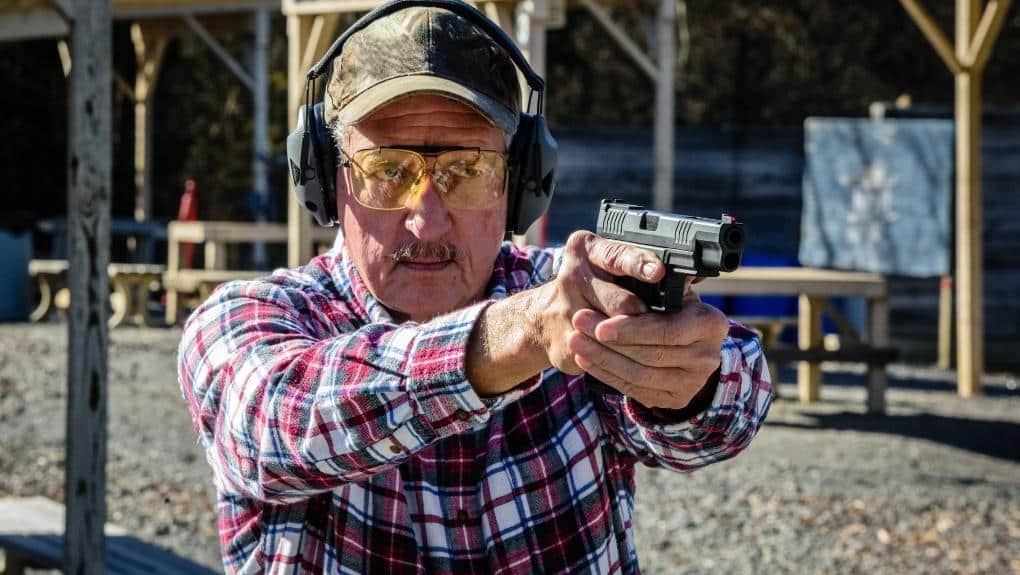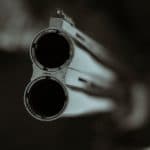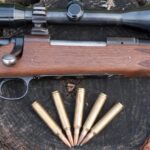Like some hunters, I grew up using only one type of firearm when hunting. Some states limit the types of guns that can be used for deer. Some families only have one gun for everyone to use.
In my case, my family was a rifle family. The first animal I harvested was a prairie dog, taken with a New England Firearms Handi-Rifle chambered in .218 Bee.
I didn’t fire a shotgun for another decade. It took me a lot of shells before I got it. But once I did, shotgunning became one of my favorite shooting activities.
So, what do you need to know if you come from one long arm tradition and want to try the other?
Put simply, rifles are aimed, and shotguns are pointed. Shotgun shooting is instinctual once you have fit and form down. Rifle shooting is more deliberate and is focused on precision, requiring you to align your eyes with the sights and the target.
If this explanation of the difference between rifle and shotgun shooting doesn’t seem obvious, that’s okay. Continue reading, and I’ll explain the differences in detail.
What is Aiming?
When you aim a firearm, you put in a conscious effort to align every aspect of the gun and yourself to be as perfect as possible.
The gun’s bore, sights, and your eye all have to be in just the right place for you to have any success with your rifle. A slight deviation in any of the above and the bullet won’t fly where you need it to go.
This is because rifles fire a single, small projectile at a consistent angle.
Sure, there’s some shot-to-shot inconsistency due to bullet manufacturing imperfection, powder charge differences, and even how the barrel vibrates slightly differently when it warms up. Still, the goal is always to hit within a small area of where you aim.
It’s easy to mess this up.
If your eye is slightly misaligned from the iron sights, you won’t be able to point the bore correctly, and you’ll be less accurate.
Even pulling the trigger slightly, say, to the left instead of straight back can shift the gun slightly, causing you to miss.
And if you’re aiming at a 6″ kill zone 100 yards away, those small errors add up.
So you have to take the time to put your eyes behind the sights properly and put the sights over the target while controlling your breathing and trigger finger.
The result is a beautiful shot, a single hole in the heart, knocking down that deer before it knows what happened.
Where Do You Focus When Aiming?
Aiming requires you to precisely align your gun’s sights. So, you’ll achieve the most success by focusing on the gun’s sights—most of the time.
With iron sights, your focus should be on the front sight.
With a traditional scope, look at the crosshair.
The exception is when you use a red dot sight or holographic sight. Then you’ll focus your eyes on the target. However, you’ll still need to keep that red dot in mind, so you’ll still be mentally focused on your sights.
Why is Aiming Bad for Shotgun Shooting?
Aiming takes time.
And shotguns are typically used against moving targets.
Any hunter who’s taken a shot at a running deer knows that it’s tough to aim correctly at a moving target. Even the best rifleman has to rely on a bit of luck when the target is moving unpredictably.
Whether you’re hunting duck from a blind or are standing at the trap line, once the target appears, you have a scant few seconds to take the shot. That’s not enough time to aim, so you need to point shoot.
When Do You Aim a Shotgun?
There are times you aim a shotgun. These are when you’re using the shotgun like a rifle: Against a slow or stationary target.
This means slug hunting, most of the time. That’s why slug barrels are often equipped with iron sights.
Turkey hunting can also fall into the aiming paradigm, especially when using the tightest chokes against turkeys at long range.
A turkey’s feathers can seem like kevlar armor, so a good tactic is to hit its head with a dense cloud of shot. This is more easily done when you slow down, take your time, and aim at the bird.
What is Pointing?
If aiming is the thoughtful way to shoot, then pointing is what happens when you rely on instinct.
You focus on the target, swing the shotgun into position, and fire. Who has time to aim?
This sounds easy but to be a successful shotgunner, you need to have the following three items:
- A well-fitted shotgun
- Good form
- A consistent mount
What’s most important with pointing is the ability to hold the shotgun in the same place every time you bring it to your shoulder.
A shotgun that fits you properly makes this much easier. You also have to do your part by holding it in the same way and with the same stance every time you bring up the gun.
Moving the shotgun into the firing position is called mounting the gun. If you’ve practiced doing this quickly and smoothly, you’ll be on target all that much faster.
When pointing a shotgun, you don’t need to be ultra-precise. In fact, you might not even be focusing your eyes on where you’re shooting as you mount the gun because part of the process is swinging through and past the target.
A shotgun’s pattern is large enough to make up for minor shot-to-shot deviations.
Where Do You Focus When Pointing?
Keep your eye on the prize.
When you’re launching a projectile instinctively, you want to focus on your target. Not just the target as a whole but as small a part of the target as you can.
Quail hunting? Aim for that patch on their neck.
Skeet shooting? Catch the leading edge of the clay pigeon with your eye.
And don’t try to stay focused for too long. You can maintain that focus best for only a few seconds before your mind starts trying to take in unnecessary details surrounding your chosen focus point.
This means you shouldn’t look at the beads on your shotgun. Ideally, you shouldn’t even notice them when you’re in the field.
Shotgun beads are not front sights. Think of them as a reference point. When you bring up the shotgun, the front bead should come to the same place every time.
And if there’s a second bead, it should form a figure-eight with the front bead, further proving that you’ve mounted the shotgun properly.
But don’t focus on the beads except to check for proper placement after mounting your gun when practicing at home. Your subconscious will use your peripheral vision to check on the beads when you’re out shotgun shooting.
Experienced shotgunners sometimes remove the beads from their shotgun’s barrel to minimize distractions. Those folks can still hit 25 out of 25 clays!
This is why red dot sights haven’t caught on with clay or wing shooting. That floating bit of light in front of your eyes distracts you and can even obscure the target.
It’s not necessary unless you’re aiming.
Why is Pointing Bad for Rifle Shooting?
An expert shotgunner will be extremely consistent from one shot to the next but they’ll never be quite as precise as someone who aims their gun.
You can see this with the folks at the range who dump their magazines as fast as possible. They’re pointing their guns at the target and, as a result, cause dirt to fly up all around.
Unless you’re shooting a large target at close range, you need to take at least a little bit of time to aim your rifle if you want to have any hope of being on target.
When Do You Point a Rifle?
There is a time and place to point shoot with rifles, however. And that’s when speed is the most essential factor.
This will never come up when hunting. If you don’t have time to take an aimed shot with a rifle, then it’s better to just. Not. Shoot.
You always want to stay aware of what’s behind your target. If your target is moving fast, you need to point at it instead of aim. It might be moving away from a safe backdrop.
The only time speed is important enough for you to sacrifice this is when you’re in a self-defense situation at knife-fight ranges, such as in your house.
And even then, you want to take a moment to confirm your target first!
Do You Aim or Point a Pistol?
Most of the time, when using a pistol, you will aim. Every now and then, point shooting comes into vogue with handguns.
The idea is that you can literally point at your target with your pointer finger by placing it alongside the frame and pulling the trigger with your middle finger.
Now, I’ve practiced this technique, and I can see why it’s never caught on in the mainstream. You just can’t be accurate enough for anything except the shortest of short ranges.
I keep it as a tool in my shooting repertoire, though not using the finger method.
Instead, I practice with the Center Axis Relock style for self-defense shooting and use the Isosceles stance for most other handgun shooting.
Transitioning Between Aiming and Point Shooting
In my experience, shotgunners have an easy time learning to aim and rifle shooters tend to have difficulty learning to point shoot. At first, anyway.
Moving from pointing to aiming is similar to learning to aim without prior experience with firearms.
If you’re a practiced rifle shooter, however, then learning to point means you have to practice a technique that runs counter to much of the muscle memory you spent a long time establishing.
It will take a conscious effort for time to keep your eyes off the front bead and on your target. This will get easier through practice.
How to Get Better at Shooting a Shotgun
Here’s my favorite shotgun mounting practice technique for breaking yourself from the desire to aim a shotgun:
- Find two or three similar-looking objects high up on the wall, about a foot or two away from each other. Bottles set on top of a cabinet work well.
- Pick one of those objects to be the target.
- Now, look at and focus your eyes and mind on a second object next to the first.
- Then, bring your shotgun up to point at the first target.
- If you have a snap cap in your shotgun, then pull the trigger. If not, move to the next step.
- Check your form and alignment. Are you on target? Good, keep practicing.
- If not, adjust and try again.
Just like other forms of dry-fire practice, repeat this exercise for a time. Some shot shooters do this daily.
Remember to clear your firearm and check to ensure there’s no live ammo anywhere near where you’re practicing!
This exercise aims to practice pointing at flying targets moving from left-to-right or right-to-left, but it’s also excellent for learning that you don’t have to take the time to aim the gun each time you pull the trigger.
If you have trouble transitioning from pointing to aiming, you can take advantage of your ability to bring the gun on target. Practice aligning the sights with your eyes after you’ve pointed the rifle or pistol at your target.
This is an excellent skill to learn anyway. Drawing, pointing, then aiming, when done smoothly, is faster than finding the sights and then putting them on your target.
Conclusion
When it comes to aiming vs. pointing, it’s good to have both skills available.
The rule of thumb is that rifles are aimed, and shotguns are pointed. Handguns are also aimed since they shoot a single bullet at a time.
However, sometimes you’ll aim a shotgun when shooting slugs. And knowing how to point shoot is an excellent skill to have if you ever find yourself in a self-defense situation.
It can feel weird going from aiming to pointing.
Once you’ve got it down, though, you can enjoy your expanded skill set!

